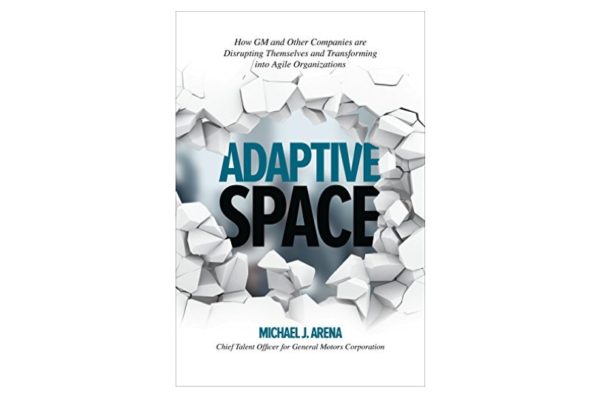
Being Stuck is an achievement.
Of course, anyone might feel a little bit stalled, dissatisfied that things are a harder slog than one wished for. But to be truly Stuck, in a way that merits Capital Letters, requires three conditions worth pausing to contemplate:
- A specific big goal
- A visualization of the progress you should be making toward that goal if all were proceeding well, that’s just clear enough for you to hold up as a yardstick and assess yourself against
- An explicit synthesis that (a) you’re not making sufficient progress; and (b) you don’t know how to turn that around
People and companies often flounder without ever achieving the clarity and focus that come with recognizing they’re Stuck. That kind of drift is to be avoided at all costs. Recognize that you’re Stuck and embrace the frustrations that come with the missteps that have brought you to this place. This recognition is the gateway to progress.
Three Traps to Avoid
These three conditions together create a vise. It is imperative to figure out how to escape this vise in the world, finding a better path toward the goal, and not to escape the vise in your mind, letting the pressure of being Stuck lift away as people in the grip of hypothermia imagine themselves to be warm.
This advice sounds easy to follow. It isn’t. In the face of being Stuck, people readily default to one of three traps, each of which represents a version of escaping the vise in the mind without escaping it out in the world.
- The visionary’s trap: assert that the vision will be realized, without actually confronting the gap between what you know how to achieve and what the vision would require
- The pragmatist’s trap: focus on the next steps you know how to take, and pretend they’re adequate to get unstuck
- The ostrich trap: ignore whatever intractable problem is at the heart of being Stuck and spend your time elsewhere, where you know how to make a positive difference
No sooner does the visionary see she’s Stuck than she pushes the thought away. The pragmatist tackles the right problem, but industriously builds sand castles against an oncoming tide. The ostrich makes the same mistake as the driver looking for his keys under the lamp-post. The uncomfortable sensation of recognizing you’ve become Stuck creates an overwhelming longing to make progress. Both the pragmatist and the ostrich let this longing lead them astray, focusing on where they can move forward without confronting that just moving forward in the way they currently know how to won’t be enough.
I see the pragmatist’s trap most commonly, so let’s examine how it works. We might term the mechanism by which the trap is sprung “thinking with one’s actions.” The world is larger than the actions we can currently imagine taking in it. When we let the actions we’ve identified limit our field of vision, we shrink our world.
To illustrate how this happens, imagine being really frustrated in your job: overworked, overstressed, insufficiently motivated by whatever intrinsic and extrinsic rewards one thinks the situation will offer. You take stock and decide this isn’t acceptable indefinitely, synthesize that you aren’t on track to find a role that fulfills your vision for what your work should be and acknowledge that you don’t have a good plan for fixing that. You’re Stuck. Now imagine a college classmate has recently been trying to recruit you, offering more money to do a job that isn’t really in the direction you’d been planning to take your career, but would give you less stress and better balance. You could take the role. You could grit your teeth and keep going on. Or you could just quit, with the hopeful thought that it might not be all that hard for someone like you to find another, better role. So long as you’re thinking with your actions, there you are. The limits of your world are defined by the three actions that you see.
It would be far better to pause, recognize that you’re at an impasse, and commit to resolve the challenge of being Stuck out in the world, by finding a better alternative than any of the three choices currently on the table. Nothing good comes from skipping this step. Acknowledging being Stuck doesn’t preclude the possibility that you may eventually decide to take a bad alternative, because you’ve arrived at a rational conclusion that better alternatives aren’t in reach and you’re running out of time. Selecting the bad alternative could possibly be a good decision. But by acknowledging and naming the impasse, you won’t select the bad alternative reflexively. Many impasses can be resolved, but only after reframing, finding new puzzle pieces, generating insights through questions you may not ever have asked — through finding a new way. This slippery work might get done by accident (these happy accidents become more likely through persistently confronting being Stuck), but more often requires cultivating new habits of mind.
Getting a Clearer Perspective
You’ve resolved to avoid the three traps, and you’re staring head on at the uncomfortable fact of being Stuck. Two questions, rarely examined rigorously, are essential to answer well to understand the boundaries within which you’re Stuck:
- (A) What are the consequences of remaining Stuck as time passes?
- (B) Given the real possibility that you might fail to achieve your goal, what ways of failing are you willing to accept as possible outcomes and what ways of failing do you want, at all cost, to avoid?
Among the most important resources you have when you’re Stuck is time. If you have a truly solid plan, which can be executed in a defined time frame with a high probability of success, then by definition you aren’t Stuck. If you’re Stuck, you need time to find a better way, and can’t know how much time this will take. Knowing what’s likely to happen as time elapses enables you to set clear boundaries, maintaining equanimity when time is still relatively abundant and deliberately taking extreme measures if and when the clock begins to run out.
A certain probability of failure comes with undertaking an ambitious goal in the first place. That can’t be ignored. Saying that failure isn’t an option may be rhetorically powerful in certain circumstances, but in the privacy of your own sanctum, denying the possibility of failure is to fall into the ostrich trap. What you can avoid is tragic failure – failure where you’ll later look back with remorse, gripped by realization that even with all the unknowns you faced, you could have decided better, simply by being clearer about your own goals and values. The way to avoid tragic failure is to answer question (B).
Suppose you’re a founder/CEO. You’ve taken $10 million in venture capital, and you’re locked in a furious battle with two competitors to be the leader in your chosen space. You’re burning money fast, and so are the others. You stare at your dashboard. Customer churn is too high. You’re acquiring customers, but not fast enough and at a cost that’s far above your plan. The math behind your business plan isn’t adding up. Of course, you’re working on all these gaps, but in your sober moments, you recognize that the odds that the actions underway will get you fully back on track are low. Your competitors might have the same problems. You suspect they do, but you don’t know for sure, and even if that’s the case, it doesn’t change your own fortunes. Maybe your funders will discover patience and give you a longer lease on life. That feels more like a hope than a plan. You’re Stuck.
You might take two possible stances to question (B) – the question of what ways of failing are and are not acceptable.
- I am unwilling to fail because we lose a competitive race. I’m open to the possibility that we’ll compete aggressively and lose. Maybe we’ll go down after making a wrong competitive move. Maybe none of the companies in our “pack” breaks through, and we fail along the with the others. Those would be honorable failures – but failing for lack of nerve isn’t acceptable.
- I’m unwilling to fail because we make a mistake and then we don’t have the flexibility and imagination to correct it. I’m willing to accept the embarrassment of admitting I was wrong. I’m willing to accept the pain of laying off staff, of disappointing investors who made a bet on dramatic growth. I’m willing to lose if another competitor finds the right recipe for success sooner than we do and dominates the market. What I’m not willing to do is run out of runway and miss out on the opportunity to find another, better way to build this company, simply because we were inflexibly committed to one approach.
If the founder with stance (i) bets big, tries her best to come up with creative ways to win the competitive race, and in the end hits a wall, yes, she’s failed – but it isn’t a tragic failure. If the founder with stance (ii) does the same, that does represent a tragic failure. Seeing that doesn’t tell that second founder what to do. Should she pare expenses to the bone today, forsaking the potential to take advantage of a tactical breakthrough she might discover tomorrow? Very possibly not. If the choice were so clear, she probably wouldn’t be Stuck. But perceiving the difference between (i) and (ii) and knowing where she stands represents an important first step the founder can make toward clarity.*
A Guide for Taking Action
These questions about elapsing time and about your stance toward different kinds of failure help to map the contours of the landscape in which you’re Stuck. But what do you do? How do you avoid the pragmatist’s trap and the ostrich trap without just sitting on your hands?
To return to an earlier post, “The Biggest Choice You Don’t Even Know You’re Making,” it is helpful to think in terms of four basic actions:
- Exploit: apply current capabilities to generate value in the most direct, efficient way
- Explore: look for opportunities that aren’t yet evident or that you don’t yet know how to exploit
- Enable: secure resources (e.g., capital, talent, alliances, patents) that can be used to make the enterprise more valuable
- Build: improve the organization’s capability to deliver value in the future, using resources already available (e.g., refine products, improve processes, develop people)
These are framed from an organization’s point of view, but the same four could be understood from the standpoint of an individual (e.g., “build” could include improving one’s public speaking ability and “enable” could include finding a powerful mentor and advocate) or from the standpoint of a higher-level coalition of actors or movement.
When you’re Stuck, “exploiting” isn’t enough to achieve your essential goals, and your current plans for “enable” and “build” aren’t good enough to close that gap. The big implications here are:
- (I) Identify the factor or factors that are rate-limiting, where solving those problems or improving those outcomes would be sufficient to get unstuck
- (II) Significantly ramp up “explore” in ways that bear on those rate-limiting factors
- Focus “enable” and “build” activities on a combination of: (a) directly moving the needle on the rate-limiting factors; (b) making “exploring” more productive; (c) gaining more time
- (III) Put “exploit” in service of these other priorities – e.g., generating resources, credibility, and so on that help maximize the odds of getting unstuck
- (IV) Severely triage activities that don’t relate to the rate-limiting factors; simplify priorities and cut activities wherever feasible unless they’re directly advancing (II), (III), or (IV)
To see what it means to put these five principles into use, let’s go back to the thought experiment above: Frustrated in the Dead-End Job. What’s the rate-limiting factor? Do you know of roles that would fulfill your aspirations but encounter some specific difficulty as you’ve competed for these roles? Have you conceptualized the roles you’d want, and have some real basis for confidence that these roles are out there, but are stuck because you can’t find the specific organizations and hiring managers? Do you have the more introspective challenge of wanting a lot of things that are in tension with one another, and as a result don’t actually have a good visualization of what the right role would even be? Without forming a clear hypothesis regarding a rate-limiting factor or factors, it is very difficult to explore productively and almost impossible to avoid the traps of the pragmatist or the ostrich. Of course, a given hypothesis might be wrong – you might think that your failure to get past early interviews is a function of not making the case well that you can achieve results, but the actual barrier is that you lack experience hiring managers view as a prerequisite. The risk of having wrong hypotheses is a hazard that comes with the territory of being Stuck – all you can do is to make the best provisional choices you can based on your current hypotheses (perhaps one dominant hypothesis, perhaps a broader set of alternatives) and to be thoughtful about how to revise your thinking as you take action and learn more.
Let’s take the second hypothesis, that the rate-limiting problem is that you aren’t able to find the jobs that match the role that you’ve conceptualized. (II) implies significantly ramping up a range of different approaches to trying to improve your job discovery (“explore”). Some of this exploration might be indirect and speculative—for instance, do you know anyone who has been particularly resourceful in finding their way into difficult-to-spot roles in any field, and might you learn by analogy from their experience? Might you benefit from reading a book or two on creative thinking, and using the exercises you find to spark more “out there” ideas for how to look? Turning to (III), there are many ways you might “enable” and “build,” but you shouldn’t invest at random. Focus on those that bear directly on your ability to explore – e.g., while the specific skills you’d gain from taking a course might not matter much, could you explore better if the course gave you access to a network of people who could help you spot opportunities? – or to some other factor that you have a strong reason to believe could be rate-limiting. One implication of (IV) is that you should probably invest less time in your performance in your current job (one form of “exploit”), unless you have a specific hypothesis for how particular achievements in this job would address a rate-limiting factor in making a move. Implications of (V) would be to take a hard look at how you can free up time from other work and leisure activities to “fund” more aggressive exploration, and to consider whether significantly reducing your financial needs would expand your ability to make professional choices that would get you unstuck.
These conclusions aren’t particularly flashy. What’s important about (I) – (V) is that they establish a level of clarity that enable you to be disciplined about your approach to being Stuck. When you’re Stuck and the clock is running out, you may well just have one shot to turn things around, and simply face a choice of which extreme move offers the best (if still small) probability of success. If you can learn to recognize being Stuck, you’ll have the chance to dramatically raise the probability of success through a disciplined process of exploration, strengthened by making good choices about “build” and “enable” that raise the odds of being able to capitalize on the best shots that exploration yields.
Navigating being Stuck requires emotional as well as intellectual strength. Sometimes an intractable problem is resolved by a sudden insight, but even in these cases, the path to the big idea is generally paved by efforts to make progress, month by month, in generating insights that eventually add up to making an intractable problem tractable. This demands discipline as well as imagination, given that the nature of intractable problems means that early insights are necessary but never in themselves good enough. With each new discovery, one registers the gap that still exists, and continues searching and generating insight.
Deciding Whether to Change Your Goal
An integral part of what it means to be Stuck is that you have a goal and to achieve that goal need to achieve progress you don’t know how to achieve. Maybe you’re applying the disciplines above, and things aren’t breaking your way. Maybe by the time you see you’re Stuck, the clock’s already ticking down. Maybe you’re early in the journey, but you just wonder if all this is worth the slog. Should you just change your goal?
Life has no algorithms that tell us what’s worth wanting or how to weigh the tensions between the many things we want. An earlier post on Living Two Stories deals with the difficult question of what to do about not knowing what one wants. In the context of being Stuck, one is well served to reflect on:
Is there a higher-level goal that I haven’t fully conceptualized / articulated, which animates the specific goal that I’m Stuck advancing? Can I get unstuck in achieving this higher-level goal if I take a fundamentally different path than the path my current goal implies?
This kind of thought process represents a potential high road in shifting your goals, meaningfully different from the low road of simply giving up. Whether even this high road is right to take depends on the depths of your reasons for having committed to your current goal in the first place, and the degree to which it is reasonable to envision that you might eventually, with enough discipline and enough imagination, get unstuck.
There’s a learnable art to being Stuck. This art encompasses the clear thinking that enables you to synthesize that you are Stuck and begin figuring out what to do about it; the intellectual and emotional strength to avoid the traps of the visionary, the pragmatist and the ostrich; the analytical rigor to dimension the time you have to get unstuck and the kinds of failures you’re resolved to avoid and willing to risk; the design thinking and day-to-day discipline to rebalance the four basic actions and invest in exploring; and the higher-level reflection to make the best decision about whether to rethink your goal.
Mastering the art of being Stuck may be the single most important aspect of how to achieve truly difficult goals. With mastery of this art, you can pursue a goal beyond your grasp – the very definition of entrepreneurship – with a basis for conviction that you can navigate the inevitable reversals well, whether to achieve ultimate success, or to fail in a way that you can at least accept without remorse. Succumb to discouragement or shy away from the challenging goals that might get you Stuck, and your possibilities will be constrained by the limits of your current abilities. Fail to treat being Stuck as an art to be mastered, and you will leave what happens in the crucible moments of your most important journeys to chance.
* These two possible stances focus in on just a part of what question (B) might illuminate. Another dimension might be whether the founder is committed to personally leading the company through this juncture (“I’m not going to fail because I relinquish control and someone else can’t do the job”), or committed to making the best choice she can for who can lead and drive (“I’m not going to fail because of my own limitations… I’m willing to fail if I’m incredibly resourceful in finding the best leader I can and for all that, even she can’t make the business work”).



